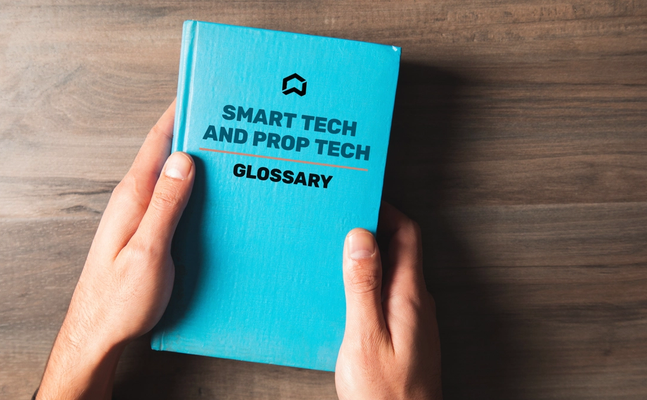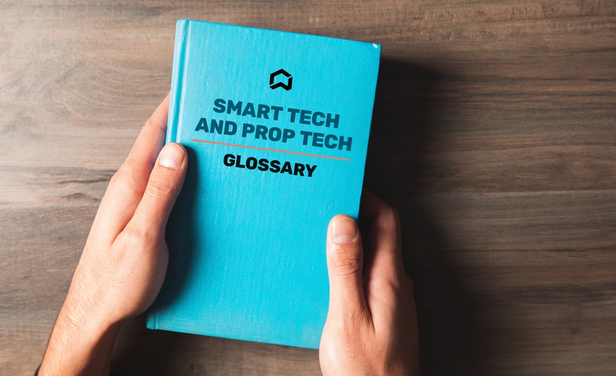Subscribe to our newsletter
From smart locks to predictive maintenance, smart technology is transforming how multifamily properties operate. But with new innovations come new acronyms, buzzwords and tech terms, many of which can feel overwhelming, especially for teams just beginning their tech adoption journey.
Whether you're a regional property manager, REIT executive or site-level team member, this glossary is designed to clarify key terms, support onboarding and empower confident conversations with vendors, investors and internal stakeholders.
Let’s decode the language of PropTech, starting with the basics. Be sure to bookmark this glossary for future reference!
Core smart home and building terms
Access control system
Definition: Systems that manage and regulate entry to units, common areas, amenities and buildings. This often integrates smart locks, doors, gates, elevators and credentialing platforms for secure and flexible access management.
Why it matters for multifamily: Enhances security for residents and assets, simplifies visitor management, enables contactless entry and provides audit trails for improved safety and operational efficiency.
Artificial Intelligence (AI)
Definition: Technology that simulates human intelligence, enabling machines to learn, reason, solve problems and make decisions. This includes machine learning (ML), natural language processing (NLP) and computer vision.
Why it matters for multifamily: Powers predictive maintenance, AI-driven leasing chatbots, personalized resident experiences, dynamic pricing models and data analysis for optimizing operations and profitability.
Automation
Definition: The ability for devices or systems to perform actions automatically without manual input, based on predefined rules, schedules or triggers (e.g., adjusting temperature when a unit is vacant, turning lights off when no motion is detected).
Why it matters for multifamily: Streamlines routine operations, improves energy efficiency, enhances resident convenience and frees up staff time for higher-value tasks.
Cloud computing
Definition: The delivery of on-demand computing services – including servers, storage, databases, networking, software, analytics and intelligence – over the Internet ("the cloud") rather than owning and maintaining physical computing infrastructure.
Why it matters for multifamily: Enables remote access to property management software, smart device data and analytical tools from anywhere, reducing IT overhead, enhancing scalability and improving data security through professional management.

Connectivity (WiFi, cellular, Z-Wave, Zigbee)
Definition: The underlying technologies that allow smart devices to communicate.
Wifi: A wireless networking technology that allows devices to connect to the internet and communicate with each other over a local network.
Cellular (LTE/5G): Wireless communication technologies that use cellular networks, often used for devices that need to operate independently of a property's wifi.
Z-Wave: Low-power, short-range wireless mesh network protocol specifically designed for smart home devices, allowing for robust network where devices can relay signals to each other over a long distance.
Zigbee: Similar to Z-Wave, Zigbee operates at 2.4GHz frequency, which can impact range and susceptibility to interference with existing WiFi signals. This protocol supports high data transfer and a large number of devices.
Why it matters for multifamily: Reliable and robust connectivity is the foundation of any smart building system. Understanding these different protocols helps in selecting compatible devices and ensuring seamless operation and scalability across a property. Community WiFi, in particular, offers significant resident appeal and operational advantages.
Edge computing
Definition: Processing data closer to where it is generated (e.g., on-site devices, building gateways) rather than sending it all to a centralized cloud.
Why it matters for multifamily: Improves speed and responsiveness for certain smart tech functions (like immediate lock activation), reduces network bandwidth usage and enhances data privacy for sensitive on-site information.
Internet of Things (IoT)
Definition: A network of physical objects ("things") embedded with sensors, software and other technologies for the purpose of connecting and exchanging data with other devices and systems over the internet.
Why it matters for multifamily: In multifamily, IoT powers automation, energy efficiency and remote control of various systems within units and common areas, creating truly connected living experiences and enabling data-driven operational insights.

Leak detector/water sensor
Definition: A sensor that detects the presence of water in unauthorized or unexpected places (e.g., under sinks, near water heaters, in laundry rooms) and alerts staff or residents to prevent costly water damage.
Why it matters for multifamily: Helps prevent significant property damage, reduces insurance claims and minimizes downtime for affected units, leading to substantial cost savings and improved resident satisfaction.
Machine Learning (ML)
Definition: A subset of AI that allows systems to automatically learn and improve from experience without being explicitly programmed. ML algorithms identify patterns in data to make predictions or decisions.
Why it matters for multifamily: Used in predictive maintenance to analyze sensor data and forecast equipment failures, in resident behavior analysis to personalize offerings and in optimizing marketing campaigns.
Smart hub / gateway
Definition: The central controller or "brain" for a unit or building's IoT devices. It acts as a bridge, allowing different devices (even from different manufacturers) to "talk" to each other and be managed from one centralized interface or application.
Why it matters for multifamily: Ensures seamless communication and interoperability between diverse smart devices, simplifying management for both residents and property staff. It's crucial for scalable smart home deployments.
Smart lock
Definition: An internet-connected door lock that enables remote access management, resident control via smartphone apps and flexible credentialing (e.g., PINs, temporary codes, virtual keys, cards).
Why it matters for multifamily: Reduces rekeying costs and maintenance requests, improves security by providing granular access control, simplifies move-ins/move-outs and streamlines self-guided tours.
Definition: A thermostat that can be controlled remotely via an app, learn resident habits and preferences and automatically adjust temperatures to optimize comfort and reduce energy usage.
Why it matters for multifamily: Commonly used to increase resident comfort, lower utility costs for vacant units or common areas and contribute to property-wide energy efficiency and sustainability goals.

Key PropTech concepts
Asset optimization
Definition: The process of maximizing the value and performance of a property or portfolio through strategic management, technology adoption and data-driven decisions.
Why it matters for multifamily: Smart tech plays a direct role in asset optimization by reducing operational costs, increasing revenue potential (through smart amenities), improving resident retention and enhancing property valuation.
Building Automation System (BAS) / Building Management System (BMS)
Definition: Computer-based control systems installed in buildings that monitor and control mechanical and electrical equipment such as HVAC, lighting, power systems, fire systems and security systems from a single platform.
Why it matters for multifamily: Optimizes energy consumption, enhances occupant comfort, simplifies facility management and can integrate with smart apartment solutions for a holistic smart community experience.
Centralized management
Definition: An operational model where the management of multiple properties, or multiple aspects of a single property, is handled from a central hub rather than on-site. This is enabled by integrated technology platforms.
Why it matters for multifamily: Helps reduce staffing needs on-site, increase operational efficiency, standardize processes across a portfolio and allows for more strategic oversight and resource allocation.
ConTech (Construction Technology)
Definition: A subset of PropTech focused specifically on technologies that enhance efficiency, safety and productivity in the construction phase of real estate development.
Why it matters for multifamily: Impacts the initial build and renovation of multifamily properties through advancements like modular construction, 3D printing, construction robotics and project management software, leading to faster build times and cost efficiencies.
Customer Relationship Management (CRM)
Definition: Software that tracks and manages interactions with prospects and residents throughout their lifecycle, from initial inquiry to lease renewal.
Why it matters for multifamily: CRMs help leasing teams follow up effectively, personalize communication, automate marketing efforts and improve lead conversion rates and resident retention by building stronger relationships.
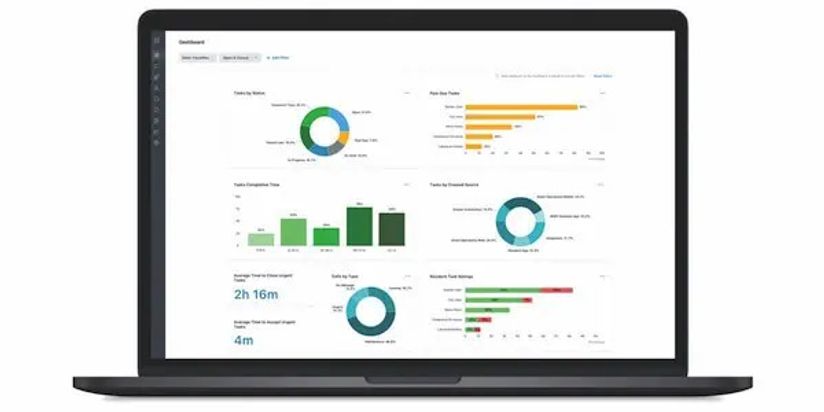
Data analytics
Definition: The process of collecting, processing and analyzing raw data (from IoT devices, PMS systems, CRM, etc.) to uncover meaningful insights, patterns and trends.
Why it matters for multifamily: Operators use analytics to optimize property performance, identify cost-saving opportunities, predict future trends, improve resident experience and make more informed business decisions.
Digital transformation
Definition: The strategic shift from manual or paper-based processes and siloed systems to integrated, tech-enabled operations across all aspects of a business.
Why it matters for multifamily: For multifamily, this includes everything from digital leasing workflows and smart building systems to automated resident communications, leading to increased efficiency, improved resident experience and a competitive advantage.
Digital twin
Definition: A virtual, real-time representation of a physical object, system or building (e.g., a specific apartment unit or an entire property). This digital model is updated with live data from sensors, allowing operators to monitor performance, simulate changes and predict future outcomes.
Why it matters for multifamily: Enables proactive management, scenario planning (e.g., energy usage optimization, space utilization), and remote diagnostics, leading to more efficient operations and better asset performance.
Predictive maintenance
Definition: Using data collected from smart devices (like HVAC sensors, leak detectors or appliance monitors) and AI algorithms to anticipate potential equipment failures or maintenance issues before they occur.
Why it matters for multifamily: Helps reduce emergency repairs, minimizes downtime for residents, extends the lifespan of assets, lowers operational costs and significantly improves resident satisfaction.
Property Management System (PMS)
Definition: A comprehensive software platform used by property staff to manage all aspects of property operations, including leasing, maintenance requests, rent payments, accounting, resident communication and reporting.
Why it matters for multifamily: It's often the digital "backbone" of a multifamily operation, centralizing critical data and workflows. Integration with smart tech solutions enhances efficiency and provides a holistic view of property performance.
PropTech (Property Technology)
Definition: A broad term encompassing innovative technologies and digital solutions designed to improve various aspects of the real estate industry, including buying, selling, leasing, managing and investing in properties.
Why it matters for multifamily: PropTech is revolutionizing how multifamily properties are developed, operated and experienced, driving efficiency, profitability and resident satisfaction.
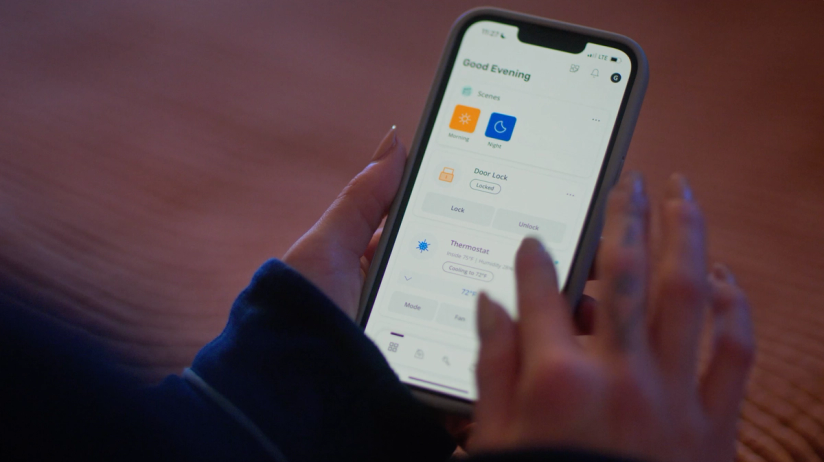
Resident experience platform / Resident app
Definition: A centralized digital platform or mobile application that serves as a single point of contact for residents to interact with their property management. This includes submitting maintenance requests, paying rent, booking amenities, receiving community announcements and controlling smart home devices.
Why it matters for multifamily: Significantly enhances resident satisfaction and retention, streamlines communication, reduces calls to staff and creates a stronger sense of community.
Self-guided tours
Definition: A leasing process where prospective residents can independently tour vacant units and common areas at their convenience, typically using a smart lock system and a mobile app for access and information.
Why it matters for multifamily: Increases tour availability beyond office hours, reduces staffing burdens, accelerates the leasing cycle and appeals to a demographic that prefers independent exploration.
Virtual tours / 3D Tours
Definition: Immersive digital representations of physical spaces that allow prospective residents to explore units and common areas remotely, often using 360-degree photography or 3D models.
Why it matters for multifamily: Increases lead conversion, reduces the need for on-site staff for initial showings, expands the reach to out-of-area prospects and provides a convenient, always-available viewing experience.
Common industry acronyms
Absorption rate
Definition: The rate at which available units in a property or market are leased over a given period.
Why it matters for multifamily: Tools like self-guided tours, AI-driven leasing chatbots and virtual staging can significantly increase absorption speed by streamlining the leasing process and improving prospect engagement.
API (Application Programming Interface)
Definition: A set of definitions, protocols and tools that allows different software applications to communicate and interact with each other.
Why it matters for multifamily: APIs are fundamental for integrating various PropTech solutions (e.g., PMS with smart home platforms, CRM with leasing tools) to create a seamless, interconnected operational ecosystem.
Cap rate (Capitalization rate)
Definition: A property’s annual rate of return, calculated as Net Operating Income (NOI) divided by the property’s current market value. It's a key metric for real estate investment analysis.
Why it matters for multifamily: Technology that drives efficiency, reduces expenses and increases revenue (thereby improving NOI) can directly contribute to a more attractive cap rate and higher property valuation.
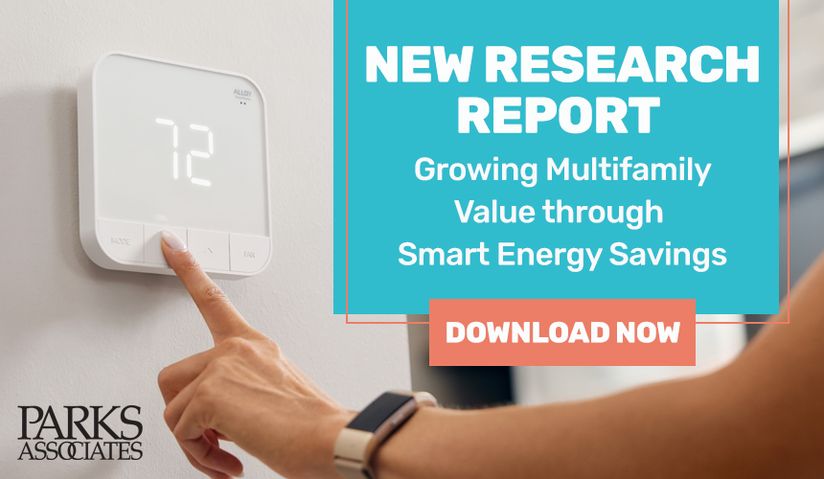
ESG (Environmental, Social, Governance)
Definition: A framework used to evaluate an organization's sustainability, ethical impact and social responsibility.
Why it matters for multifamily: Smart devices like thermostats, leak detectors, smart lighting and energy meters can directly support ESG goals by reducing energy consumption, conserving water and creating healthier living environments, attracting eco-conscious residents and investors.
KPIs (Key performance indicators)
Definition: Quantifiable metrics used to evaluate the success of an organization or a particular activity.
Why it matters for multifamily: Smart tech helps track and improve crucial KPIs such as average work order response time, energy consumption per unit, resident satisfaction scores, lease renewal rates and amenity utilization.
Definition: A core performance metric in real estate, calculated as a property's total revenue minus its operating expenses (excluding mortgage payments, depreciation and income taxes).
Why it matters for multifamily: Smart tech often contributes to NOI by reducing operational expenses (e.g., energy savings, fewer maintenance calls) and driving resident retention, which increases revenue.
REIT (Real Estate Investment Trust)
Definition: A company that owns, operates or finances income-generating real estate. REITs trade on major exchanges like stocks, providing investors with a way to invest in real estate.
Why it matters for multifamily: Many REITs are increasing investment in smart tech to improve asset value, enhance operating margins and meet investor demands for modern, efficient properties.
SaaS (Software as a Service)
Definition: A software licensing and delivery model in which software is licensed on a subscription basis and is centrally hosted in the cloud, accessible via a web browser or mobile app.
Why it matters for multifamily: Most modern PropTech solutions, including PMS, CRM and smart home management platforms, are delivered as SaaS, offering scalability, automatic updates and reduced on-site IT infrastructure needs.

Smart apartment vs. smart community: What’s the difference?
Smart apartment
Definition: Refers to technology-enabled individual residential units, typically featuring devices like smart thermostats, smart locks, smart lighting and a central smart hub, all controlled primarily by the resident via a smartphone app.
Why it matters for multifamily: Enhances resident convenience, energy efficiency within the unit and provides a competitive amenity that attracts and retains residents.
Smart community
Definition: Expands the smart apartment model to encompass common areas, shared systems and property-wide operations. This includes integrated access control at gates, package rooms, clubhouses and fitness centers, along with central management tools for staff to monitor and manage building systems (e.g., common area lighting, HVAC, leak detection across the property).
Why it matters for multifamily: Offers a holistic approach to smart tech, enabling greater operational efficiency, cost savings across the entire asset, enhanced security for the whole property and an elevated living experience that extends beyond the individual unit. Understanding the distinction helps operators scale tech adoption more effectively across assets and realize broader ROI.
Why terminology matters
As smart technology becomes essential to modern multifamily operations, fluency in its language is more than a bonus, it’s a business advantage.
When your teams understand the terms, tools and trends, they can:
Communicate confidently with tech vendors and service providers
Reduce friction during technology onboarding and implementation
Make faster, more informed decisions about tech investments
Effectively leverage smart solutions to improve property performance and resident satisfaction
Position your properties as forward-thinking and desirable in a competitive market
Ready to take the next step in your smart tech journey? Schedule a SmartRent demo today to explore integrated solutions built for real-world property operations.
